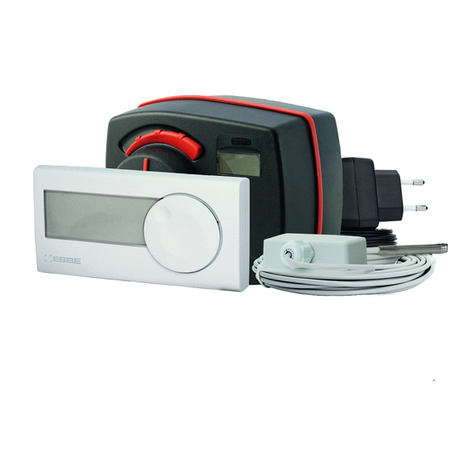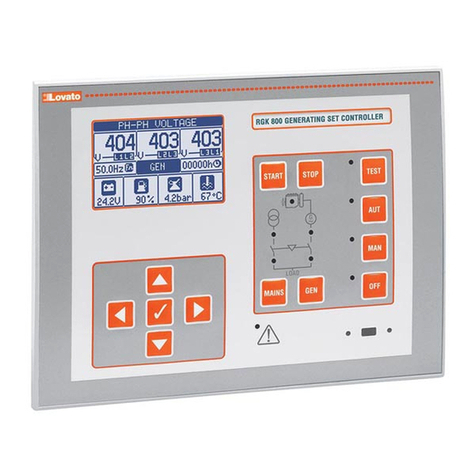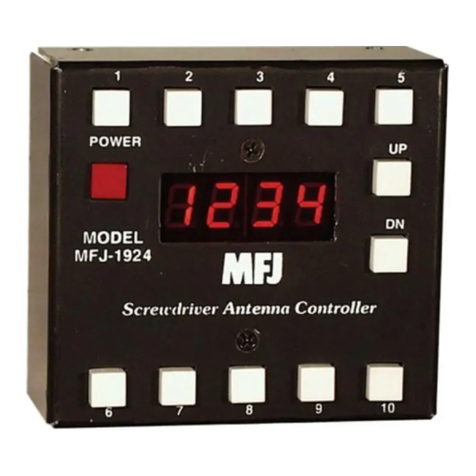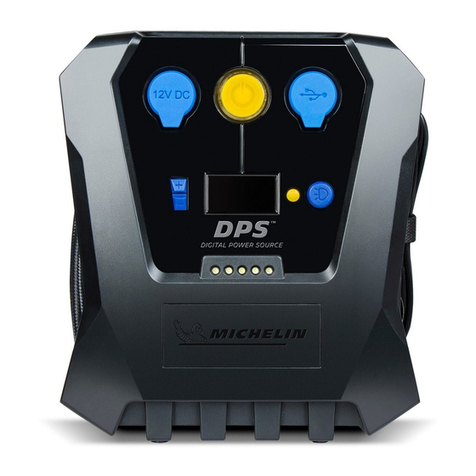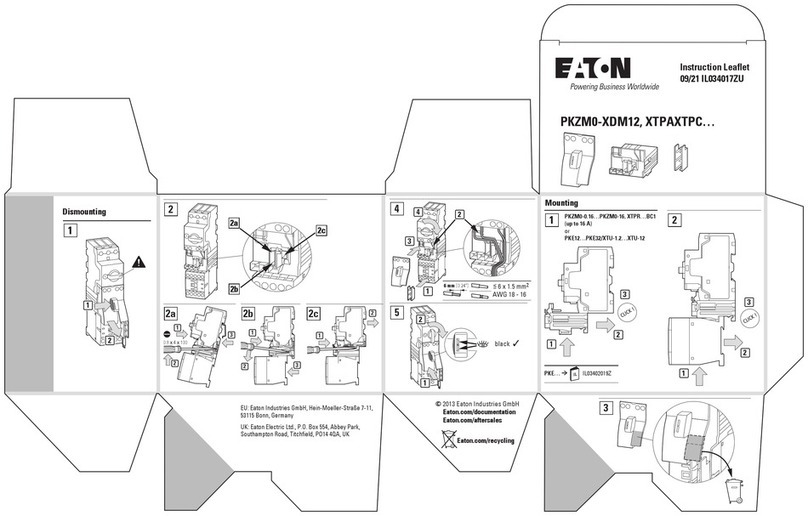Heiland electronic SPLITGRADE User manual

Paper Gradation Management System
User´s manual V3.4
Heiland electronic GmbH
SPLITGRADE

2
Contents
SCHEMATIC VIEW OF THE COMPLETE SPLITGRADE SYSTEM.............4
THE PRODUCT..............................................................................................5
COPYRIGHT...................................................................................................5
WARRANTY ...................................................................................................5
TECHNICAL SPECIFICATIONS OF THE CONTROL UNIT ........................................6
FACTORY CALIBRATED PAPER TYPES ..............................................................7
FACTORY CALIBRATED FILM TYPES .................................................................8
CONTENTS OF THE DELIVERY .........................................................................8
FEATURES.....................................................................................................9
OPERATION CONDITIONS.........................................................................10
SAFETY ADVICE...........................................................................................10
INSTALLING THE FILTER MODULE AND CONTROLLER.......................10
CONNECTING THE SYSTEM...........................................................................11
USING THE CONTROLLER ........................................................................12
DESCRIPTION OF THE PUSH-BUTTONS...........................................................12
DISPLAY......................................................................................................12
THE QUICK PATH TO HIGH QUALITY PRINTS........................................13
PREPARATION .............................................................................................13
PRINTING....................................................................................................14
RESULT.......................................................................................................15
MANUAL CHANGES ...................................................................................15
CHANGING THE EXPOSURE TIME...................................................................15
CHANGING THE GRADE.................................................................................15
FAST SELECTION OF PAPER GRADE 00 OR 5..................................................16
WARNINGS DURING MEASUREMENT .....................................................16
FURTHER MEASUREMENT MODES.........................................................17
MULTIPOINT MODE AND DENSITY MEASUREMENT ...........................................17
TIME MEASUREMENT....................................................................................17
SUGGESTIONS FOR SETTINGS IN SPECIAL CASES...........................................18

SPLITGRADE USER’S MANUAL V3.4 3
BURN-IN FUNCTIONS.................................................................................19
ACTIVATION AND SETTING............................................................................19
EXPOSING...................................................................................................20
BURN-IN USING WHITE LIGHT ........................................................................20
USER PREFERENCES................................................................................21
REFERENCE POINT ......................................................................................21
BEEPER ......................................................................................................21
TIME BASE...................................................................................................22
FILTER........................................................................................................22
PERMANENT OFFSETS FOR EXPOSURE..........................................................22
TEST STRIP MODES...................................................................................24
CONTROLLING UP TO THREE DIFFERENT TYPES OF ENLARGER.....26
USING THE CONTROLLER AS AN ANALYSER (SPL-M1) .....................27
CARE AND MAINTENANCE .......................................................................28
CHANGING THE FUSE ...................................................................................28
CARE OF INSTRUMENT .................................................................................28
APPENDIX: DETAILS OF FILM AND PAPER PROGRAMS......................29
FURTHER PRODUCTS OF HEILAND ELECTRONIC................................31

4
SCHEMATIC VIEW OF THE COMPLETE SPLITGRADE
SYSTEM

SPLITGRADE USER’S MANUAL V3.4 5
THE PRODUCT
Copyright
All programs stored in the controller as well as this manual are protected by
copyright. The copyright belongs to Heiland electronic GmbH, Wetzlar,
Germany with all rights reserved.
Under the copyright laws no part of the programs and no parts of this
manual may be reproduced in any form without the prior written permission
of Heiland electronic GmbH, Wetzlar, Germany.
Warranty
This instrument carries the manufacturer's warranty for the period of two
years from the date of purchase. Proof of purchase is the invoice or receipt.
Damage caused by improper handling or unauthorised access invalidates
the guarantee. No warranty either expressed or implied is made of this
instrument regarding its quality, performance, suitability or fitness for a
particular purpose.
The manufacturer is not liable for direct, indirect, special, incidental or
consequential damages arising of the use or inability to use this instrument
or documentation even if advised of the possibility of such damages. In
particular the manufacturer assumes no liability for any material including
negatives or photographs used with this instrument including whatever costs
of repairing, replacing or recovering such materials.
This instrument has been carefully manufactured and tested using flawless
materials and state-of-the-art technology. In case of failure return the
instrument to an authorised service agent accompanied by proof of
purchase. Within the warranty period, the manufacturer assumes the cost of
replacement parts and repair. The manufacturer reserves the right to replace
the instrument in lieu of repairing at its discretion.
Valid for software rev. 3.4
May, 10th 2018, Changes without notice.

6
Technical Specifications of the control unit
Measuring probe light sensor for intensity and contrast measurement
resulting in a suggestion for exposure time and
paper grade. Acoustic support by beeper and LED,
diameter of reading point: ø3mm
Exposure control built-in exposure timer and light shutter
Measuring range 0.01- 10 lx (10 f-stops)
Exposure time range 0.5 - 500 sec,
Resolution 0.01 sec
Time error <0.5%, repeatability error <0.1%
Gradation input automatic in 0.1 steps, after reading of the contrast
Manual grade setting in 0.1 steps with automatic density control
Manual time setting in1/10f-stops or 0.1 sec steps with constant grade
Grad table factory adjusted for up to 28 papers of main brands
and 6 films. Updates free of cost via our website.
Interfaces light sensor, foot switch, RS232, USB
Display illuminated LCD display with 4 lines
Voltage supply 100V … 240 V / 50…60 Hz
Dimensions (WxLxH) 160mm x 260mm x 80mm (Version 1...3)
120mm x 210mm x 70mm (Version 4)
Weight approx. 1kg without accessories
Delivery content controller, probe, footswitch, connecting cables,
optional filter module or LED light source
Fuse 4A time lag

SPLITGRADE USER’S MANUAL V3.4 7
Factory calibrated paper types
Paper type Display Developer Dilution/Time
ADOX MCP 310 RC AD MCP310 MOERSCH Eco 1+9 / 75 s
ADOX Variotone FB AD VARIOT MOERSCH Eco 1+14/180 s
ADOX MCC FB AD MCC MOERSCH Eco 1+14/150 s
BERGGER Prestige Variable CB BE PRVACB MOERSCH Eco 1+14/180 s
FOMA Variant III RC FM III RC CALBE N113 1+0 / 60 s
FOMA Variant 311 RC FM V311RC MOERSCH SE4 1+9 / 60 s
FOMABROM Variant 111 FB FM B111FB CALBE N113 1+0 / 120 s
FOMATONE MG Classic 131 FB FM C131FB CALBE N113 1+0 / 120 s
ILFORD Multigrade IV RC IL MGIVRC ILFORD Multigrade 1+9 / 60 s
ILFORD Multigrade RC Warmtone IL MGRCWT ILFORD Multigrade 1+9 / 60 s
ILFORD Multigrade RC Cooltone IL MGRCCT ILFORD Multigrade 1+9 / 60 s
ILFORD Multigrade Classic IL CLASS ILFORD Multigrade 1+9/ 120 s
ILFORD Multigrade Art 300 IL ART300 MOERSCH Eco 1+14/180 s
ILFORD Multigrade FB Warmtone IL MGFBWT ILFORD Multigrade 1+9 / 120 s
ILFORD Multigrade FB Cooltone IL MGFBCT ILFORD Multigrade 1+9 / 120 s
KENTMERE VC Select KE SE RC KE VC Select Plus 1+9 / 100 s
KENTMERE Fineprint VC FB (2012) KE FP FB KE VC Select Plus 1+9 / 100 s
ROLLEI Vintage 311 RC RO VIN311 MOERSCH SE4 1+9 / 60 s
TETENAL Vario RC TT VariRC MOERSCH Eco 1+14 / 60 s
TETENAL Baryt Vario FB TT BA VA MOERSCH Eco 1+14 / 90 s
TETENAL Work * use setting AGFA MCP RC
Other papers** Others
Paper of fixed gradation*** Fixed (Exposure with white light)
Further calibration sets for papers which are no longer under production may be
installed while doing a software upgrade. This refers to brands of AGFA, AMALOCO,
BERGGER, FORTE, FOTO IMPEX, MOERSCH, ORIENTAL, TETENAL, ZONE VI.
* These papers have not been calibrated, but the mentioned settings may be
used with good results.
** Three channels may be used to adapt other papers. Factory setting is
made for low, normal and high sensitive paper. Calibration is done with
general corrections (see page 22)
*** Exposure with white light, time and grade measurement is possible.
There is no certain paper defined, the user adapts his favoured paper by
offset values to the Splitgrade setting.
Please note: All factory settings assume fresh chemistry and paper as well
as 20°C developer temperature!

8
Factory calibrated film types
Film type Display*
Conventional Silver halide film Conv.
ILFORD „XP2“ * XP 2
ILFORD „XP2 Super“ * XP2 S
KODAK „T400CN“ * T400C
KODAK „Portra“ * Portr
KONICA „VX400“ * VX400
Silver halide film developed with Moersch Finol ** Finol
Silver halide film developed with Moersch Tanol ** Tanol
Silver halide film developed with Pyrogallol ** Pyro.
Notes:
* When a chromogenic B&W film is selected, an additional symbol will be
displayed for the film speed selected during the exposure:
+indicates 50 - 100 ASA
Nindicates 200 - 400 ASA
- indicates 800 - 1000 ASA
** If you use developers giving a stain to the film, you may add additional
offsets to compensate the stain. This is done independent of the paper offset
values. For details please refer to page 22.
Contents of the delivery
If any of the following items are missing or damaged, please contact your
supplier immediately.
The SPLITGRADE controller, used to analyse the measured values,
calculate the appropriate paper grade and exposure time and to control
various filter modules or LED cold light sources.
The light sensor (probe) to scan the projected picture.
A footswitch to start or stop the exposure.
Cable set to connect the controller, enlarger and darkroom safe light
Optional: An enlarger module with the motor-driven filter wheel or a LED
cold light source with a power supply.
Note: We recommend to keep the packaging of the instrument in case of the
need for further shipment.

SPLITGRADE USER’S MANUAL V3.4 9
Features
SPLITGRADE is an electronic instrument intended to control the exposures
and the contrast range of variable contrast papers (VC) during enlarging.
By printing the picture in two steps using maximum filter setting for
yellow and magenta, print results are greatly improved.
The contrast range of variable contrast papers will be perfectly matched
to the given contrast range of the negative.
The characteristics of various variable contrast papers from AGFA,
AMALOCO, BERGGER, FORTE, FOMA, ILFORD, KENTMERE,
KODAK, MOERSCH,TETENAL and ORIENTAL are already stored in
the SPLITGRADE controller unit or could be added to the basic
calibration set.
The composition and evaluation of the picture takes place under white
light.
The exposure time and the grade are calculated after a scan of the pro-
jected negative. The scan is supported by acoustic and optical signals.
The darkest and the brightest spot detected determine the result.
The exposure time and paper grade are automatically adapted, also if
another paper type is selected after measurement.
At any time the user might override the calculated values or just set the
exposure time and paper grade without using the probe.
Without an automatic filter module or light source, SPLITGRADE can be
used as a high quality B&W analyser and exposure meter.
The focus light will be automatically switched OFF after 5 minutes.
The firmware is easily updated by a free download from our homepage.
To do so, you need a PC with Windows, OS X or Linux operating
system. If you own an older controller (serial no. starts with 02... or 03...
you will need an additional USB-Serial converter to connect the serial
interface of the controller to an USB port of the computer.
SPLITGRADE is the comprehension of our practical experience
acquired for more than 25 years
Conclusion
The usage of the SPLITGRADE system enables the production of high
quality prints and fine art prints, with a speed and comfort never reached
before by any other system.
As this printing system greatly improves printing efficiency, while saving
time, chemistry and paper, every photographer will have much more time for
creative printing.

10
OPERATION CONDITIONS
Safety advice
This instruction manual should be read prior to installation and first use.
The SPLITGRADE controller and module contained in this package are
intended to operate only with the appropriate enlarger. The type of enlarger
is specified on the front label of the package.
To prevent electric shock or fire hazard, remove the power cord from the AC
supply prior to connecting or disconnecting any signal lead or prior to
replacing the fuse.
If one of the AC cables becomes damaged, refer servicing only to qualified
personnel.
Should any liquid drop into the SPLITGRADE controller or modules,
disconnect immediate the control unit from mains and have it checked by
qualified personnel before operating it again.
Unplug the SPLITGRADE controller from the voltage supply, if it is not going
to be used for several days or more. To disconnect the supply cable, pull it
by the plug. Never pull the cord itself, otherwise the cable will be damaged.
Make sure that the mains voltage and frequency are in the range indicated
on the identification label on the bottom of the instrument.
This instrument should only be connected to a properly installed voltage
supply outlet that has been properly grounded to earth.
It is not permitted to exchange the power cables for any other without
protected ground / earth wire and safety plug.
Always keep the instrument in a dry place and never immerse it in any kind
of liquid.
To prevent electric shock do not open. There are no user-serviceable parts
inside.
To avoid fire hazard, use only a fuse of the correct type, voltage and current
rating as specified in technical data (see page 6).
INSTALLING THE FILTER MODULE AND CONTROLLER
All filter modules or enlarger heads, supplied together with SPLITGRADE,
are compatible to those of the enlarger manufacturer. Please refer to the
user manual of the enlarger regarding the installation of the module or head.
Do not install the set in a hot or humid place or in a place subject to
excessive dust. Take care that there is enough working space around the
controller to operate it safely in the dark.

SPLITGRADE USER’S MANUAL V3.4 11
Connecting the system
Fig. 2: Rear view of the SPLITGRADE Controller unit
Version 1...3 Version 4 USB
The controller can be used at voltages according to the id label located at
the bottom of the unit.
All connectors, the main switch and fuse are located at the rear side
connector panel (see Fig. 2).
First, connect all components to the controller like filter module or filter head,
the enlarger and the darkroom safelight. Secure the signal cables by
fastening the screws carefully. Please do not apply brute force.
Finally connect the SPLITGRADE Controller to the main voltage supply.
If a motorised filter module is connected, the filters will be moved to an initial
position after switching ON. The rotation of the motor may be audible.
Component
Cable/Plug
Label at Controller
Filter module
15-pin female
Module
Probe
9-pin female
Probe
Splitgrade Comfort
9-pin male
Com 1
Power plug of enlarger
Adapter cable
Enlarger
Darkroom safelight
Adapter cable
Safelight
Main Voltage Supply
Power cable
Power Supply
Foot switch
Jack plug 2.5mm
Foot Switch
PC (only for software update)
9-pin male (Ver 1..3)
USB (Ver. 4)
Com 1
Table 1: Connections
Fuse 4A time lag

12
USING THE CONTROLLER
Description of the push-buttons
The functions are controlled by push-buttons, the buttons marked by * have
an auto repeat function.
One short press changes the value in one step, a longer press will result in a
repeated change of the value.
Focus, ON/OFF switches the enlarger light on/off,
for setting the enlarger and scanning the picture with the probe.
Start/Stop, starts (or stops) the exposure time shown in the display.
The remaining time is still stored and can be recalled by pressing the
start button again. If during exposure any button other than the start
button is pressed, the exposure will stop and the time will be
cancelled. Splitgrade controllers of the first generation are using the
upper symbol, those of the second generation the second symbol.
Plus,* increases the value marked by the cursor by one step or
alters the function.
Minus,* reduces the value marked by the cursor by one step or
changes the function.
Cursor,moves the cursor in the direction of the arrow or to the next
line.
Page,switches between the pages of the LCD display.
Foot switch, starts (or stop) the exposure.
Probe switch, starts and stops the density measurement
Display
All data important for the working of the system are shown in the 4-lines
display. The contrast is adjusted by turning a screw (potentiometer), which is
accessible through a tiny hole at the left rear side of the controller.

SPLITGRADE USER’S MANUAL V3.4 13
Temp.: 0.0f / 0.0G
Time: 5.40 s Grad: 2.0
P: IL MGIVRC F: Conv.
THE QUICK PATH TO HIGH QUALITY PRINTS
In order to profit from the SPLITGRADE system very quickly, please proceed
as follows:
Preparation
Connect the controller following the safety advice on page 10.
Use a paper and matching chemistry as indicated on page 7 of this
manual using only fresh paper and chemistry.
Do not use old paper or used chemistry.
Switch on the controller.
If the filter module and the probe are connected properly, the controller
displays the following information for a short while:
1. Software release
2. Type of enlarger
Next after the display will look similar like that:
After power on: Offset values KY and KM of filter module
After first key is pressed: Temporary offsets by the user
If you like to change the paper type, move the cursor to P: by pressing
the or button.
Start the selection of the paper type by pressing the or
button. Each time you press the button, another paper brand will
appear. Continue pressing or simply hold the “+” or “-“ button until your
preferred paper is displayed. Accept the selection by pressing the
button .
If necessary, move the cursor to “F”: and change the type of film the
same way.
Paper grade for the
print in the range of
00.0 to 5.0
Selected film type
e.g. Conventional
Conventiona
l silver
Film
Exposure time
in seconds
Cursor
Selected paper
e.g. ILFORD
MULTIGRADE
IV RC

14
Printing
Put the negative into the negative carrier.
Switch on focus light by pressing the button
The following display appears:
Set up the magnification and focus the image. Then stop down the f-
stop of the enlarger lens.
Measurement is always done at working f-stop.
Place the probe into any part of the projected image, taking care that
the green window on top of the photo sensor is not covered.
Start the measuring procedure by briefly pressing the red button on the
probe, An intermittent signal sounds and you will have the following
display:
Move the probe over the projected image while looking for the darkest
and the brightest areas until the signal stops. Maximum probe
movement velocity is 5cm/sec, which is similar to the movement of a
computer mouse. The displayed contrast will increase.
We recommend not to measure very small spots like lamps and candle
lights, as their contribution is not important for the overall impression of
the print but can falsify the measurement resulting in a too soft grade.
No sound for a longer time indicates that the scan is complete. To stop
the measurement, press the red button on the sensor again.
Indicates the selected
measurement mode
(refer to page 17)
The contrast of the
previous measured
negative
Focus active
Mode: continuous
Start density meas.
Previous contr: 0.00
Focus active
Mode: continuous
Density meas. active
Contrast: 0.01

SPLITGRADE USER’S MANUAL V3.4 15
Measured contrast
(for example 1.05)
Focus active
Mode: continuous
Density meas. active
Contrast: 1.05
You will get a display similar like that:
Switch OFF the enlarger light by pressing the button .
The display shows the exposure time and the paper grade as calculated
by the controller for the selected paper and film type.
If the beeper sounds 3 times, please check the display and refer to the
detailed description in chapter "Warnings".
After a successful measurement put the paper on the enlarging easel
and start the exposure by pressing the button.
Process the paper.
Result
The lightest and darkest portions of the negative, which have been
measured, result in about 90% of the max. density and a light grey print
tone. This is what we call a technical correct print. It will satisfy your
requirements for a good start in most cases.
MANUAL CHANGES
To modify the print according to your taste in art, you may either change the
grade and or the exposure time temporary with the buttons or . The
modifications are displayed in the first line of the LCD, so you might return at
any time to the original values. A new measurement overrides the changes.
Changing the exposure time
Move the cursor to position Time: to make the print lighter or darker.
Factory setting affects changes in steps of1/10 f-stop, re calculating the
exposure time considering the reciprocity failure.
To change that default setting to a linear change in units of seconds please
refer to chapter ‘user preferences’.
Changing the grade
Move the cursor to position Grad: and modify the contrast in steps of 1/10
grade. The exposure time will be adjusted automatically to achieve constant
lights, mid grey or shadows –what ever you set in the user preferences.

16
Too much light
Start meas. again
Too little light
Start meas. again
Time too long
Start meas. again
Time too short
Start meas. again
Check contrast
Fast selection of paper grade 00 or 5
For simple burn in procedures in the main menu place the cursor in Position
Grad.: Now you may fast change the paper grade to 00.0 by pressing
simultaneously the buttons and .
A value of 5.0 is selected by pressing simultaneously and .
WARNINGS DURING MEASUREMENT
Out of range failures during or after measuring will be announced by a 3
beep signal and displayed as follows:
The intensity is too bright for the light sensor.
Close f-stop and start measuring again
The intensity is too low for the sensor. Open the
f-stop and start measuring again
Calculated exposure time is too long, open the f-
stop and start measuring again
The exposure time is too short, close the f-stop
and start measuring again
The measured contrast is out of the ISO-R range
of the selected paper. If you proceed, the print
may loosen details, because the paper grade
could not get less 00 or more than 5.
Another reason might be, that you covered the
light sensor or you moved it outside the negative
(e.g. to the base plus fog area) while measuring. This results also in a large
contrast.

SPLITGRADE USER’S MANUAL V3.4 17
Focus active
Mode: Multipoint
Density: 0.01 logD
Contrast: 0.01 logD
Focus active
Mode: Time measurem.
Start density meas.
Value no.: 1
FURTHER MEASUREMENT MODES
To adapt the system best to your needs, there are two more modes
available. To select the proper mode switch on the Focus light , then press
button
Multipoint mode and density measurement
This mode enables a more individual scan, as the measurement is active
only when you press or hold the red button in the sensor. So you might
continue the measurement in a different area of the print.
First place the sensor at the lightest point of the negative with details, then
press the red button of the sensor for about half a second. You will get a
display like this:
The 3rd line displays the density in
reference to this first point, the last line
displays the contrast that is taken into
calculation for the paper grade. To check
the density of other areas in the negative
simply move the probe to these points
and read density in line 3. To consider the selected point for the paper grade
calculation, press the red button of the probe for a short while. You may also
measure larger areas while moving the probe and simultaneously holding
down the red button.
To calculate the exposure, release the red button and press .
Time measurement
If there is a lack of black and/or white
tones in the negative, you might select
time measurement. According to the
setting of the reference point (refer to
chapter ‘User preferences’) the system
calculates the exposure times to achieve
at the measured point(s) either
- lights with small details
- mid grey
- 90% maximum density selected
The paper grade is not modified by the measurement and might be preset
before or altered after the measurement.

18
Suggestions for settings in special cases
Portraits
- Reference: Mid Grey
- Measurement mode: Time measurement
- Paper grade: Set manually
White egg on white plate
- Reference: Lights
- Measurement mode: Time measurement
- Paper grade: Set manually
Black dog on black coal
- Reference: Shadows
- Measurement mode: Time measurement
- Paper grade: Set manually
Same tone range for different enlargement scales
If you like to get the same tonal range for pictures of different magnification,
you should always select the same points while measuring.
If you clip a part of the negative and the darkest and the brightest points are
not situated in the area to be printed, please measure also outside the
baseboard to secure correct reference values for calculation of the paper
grade and the exposure time.

SPLITGRADE USER’S MANUAL V3.4 19
BURN-IN FUNCTIONS
Your SPLITGRADE has a very useful burn-in function. It enables you to
store up to 7 independent burn-in times, thus building up an exposure
sequence together with the main exposure time. The main exposure is
automatically followed by the burn-in exposure.
Activation and Setting
To enter the menu with the burn in functions, press the key several times.
If the controller is in the main menu, you need to press that key only once.
In line 1 (T0) the calculated (main) exposure time and grade are listed.
If you change these values, please pay attention to the fact that the time and
grade in menu 1 are also altered accordingly.
To select the time or grade of a burn in time move the cursor to the entry by
pressing the or button until the cursor appears in the desired position.
The display toggles automatically between Times 0 to 3 and 4 to 7 while
moving the cursor.
Altering the values of the time and grade is done by pressing or
By pressing both keys simultaneous, you alter the mode of the burn in time,
which is actually marked by the cursor. You may decide if the time should be
independent of the main exposure (in the above example T1 and T3) or
should be adapted to the main exposure in units of 1/10 f-stop (in the above
example T2). This feature could be selected for any of the burn in times. The
advantage of the adapted f-stop method is, that after a change of the
enlargement scale, you only have to measure the main exposure time again
and the whole burn in sequence is adapted to this new time.
If you have entered all the times and grades for a special sequence, set the
cursor to the first unused burn-in exposure time. Press and hold the
button in order to change this time to 0.00s or 0.0f-stop. This
signals the end of defining the exposure sequence to the controller.
T0: 5.40s G: 2.0
T1: 3.16s G: 5.0
T2: 3.37s 0.7f G: 00.0
T3: 2.05s G: ----
Grade of main exposure
e.g. grade 2.0
Grade of 1st BI e.g. 5
Grade of 2nd BI, e.g. 00
Grade of 3rd BI, e.g.
burn in with white light
Main exposure e.g. 5.4s
1st burn in (BI) e.g.3.16s
2nd BI, e.g. 0.7 f-stops of
main exposure, i.e. 0.7f of
5.4s=3.37s
3rd BI, e.g. 2.05s

20
Exposing
Example: You like to use the main exposure and two additional burn-in times
as well. The values T0 and G0 are the main exposure, values T1 / G1 are
the first burn-in and T2 / G2 are the second burn-in time. Define these
values first. Then set T3 to 0.00s.
Go back to time T0, by using button . To start the exposure sequence
press the button. . After any exposure, the cursor moves on to the next
line and the according burn-in time can be started by pressing again.
The whole sequence is terminated after the last programmed (maximum 7)
exposure has been executed. Then the cursor moves back to time T0.
You may stop and continue an exposure by pressing the again,
or you can terminate the whole sequence at any time (also while exposing)
by pressing any other button.
Between the single steps of the sequence you may turn in the red (safe light)
filter in front of the lens and switch on the focus light in order to search for
areas that should be dodged. The focus mode will not terminate the
exposure/burn-in sequence.
All settings will be stored automatically when you leave the burn in menu.
Of course, you may also select only one of the burn in times and start this
time by pressing the button.
To quit the burn-in function, press the key until the main menu is
displayed.
Burn-in using white light
For any of the burn-in times 1-7, you may select white light for burn-in. To do
so, change the paper grade to 5.0 and press one more time or select
paper grade 00.0 and press
The display will then show “---“ to indicate the while light mode.
To cancel this setting, simply select another paper grade.
Other manuals for SPLITGRADE
1
Table of contents
Popular Controllers manuals by other brands
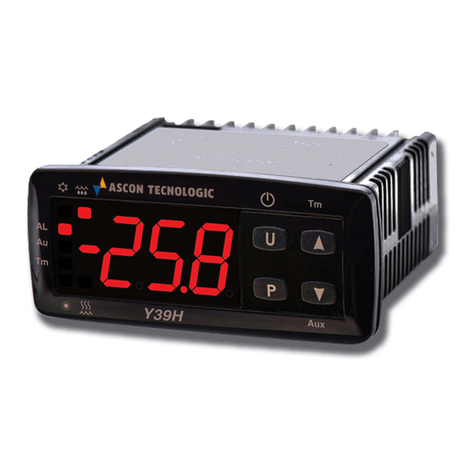
Ascon tecnologic
Ascon tecnologic Y39H operating instructions
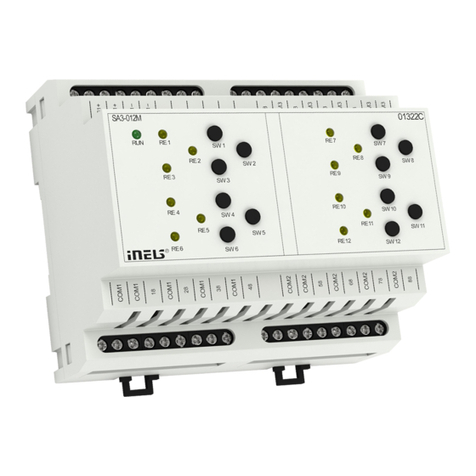
iNels
iNels SA3-012M instructions
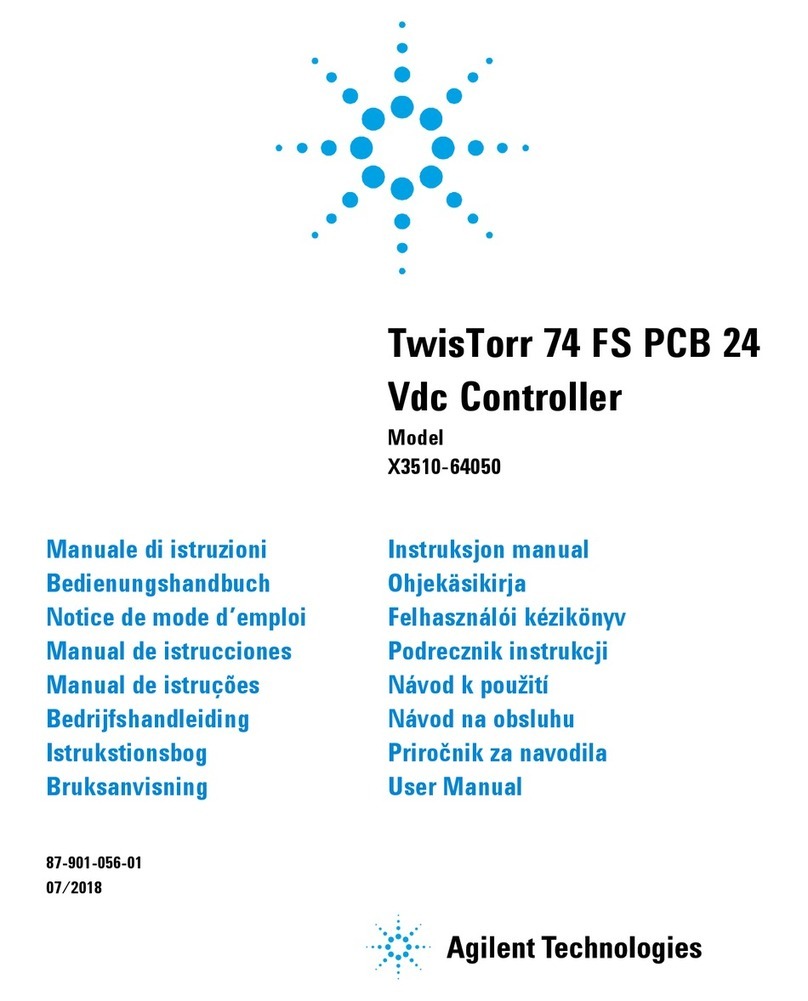
Agilent Technologies
Agilent Technologies TwisTorr 74 FS PCB 24 instruction manual

Thermotron
Thermotron AST 8800 instruction manual
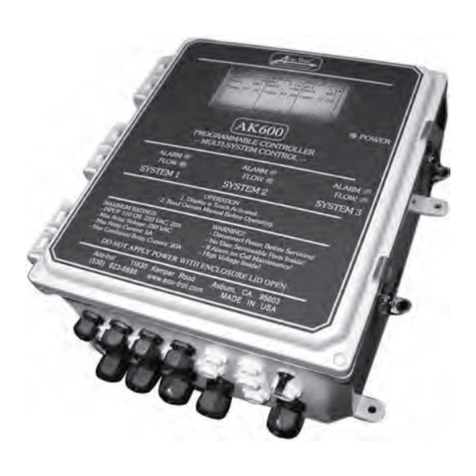
Pentair
Pentair ACU-TROL AK600 Installation and user guide
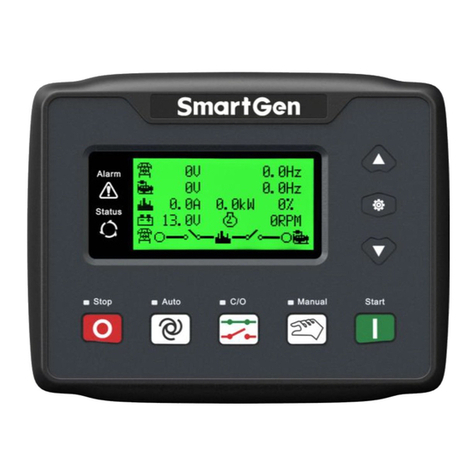
Smartgen
Smartgen HGM4100LT user manual

Lumel
Lumel RE22 User Manual & Quick Start
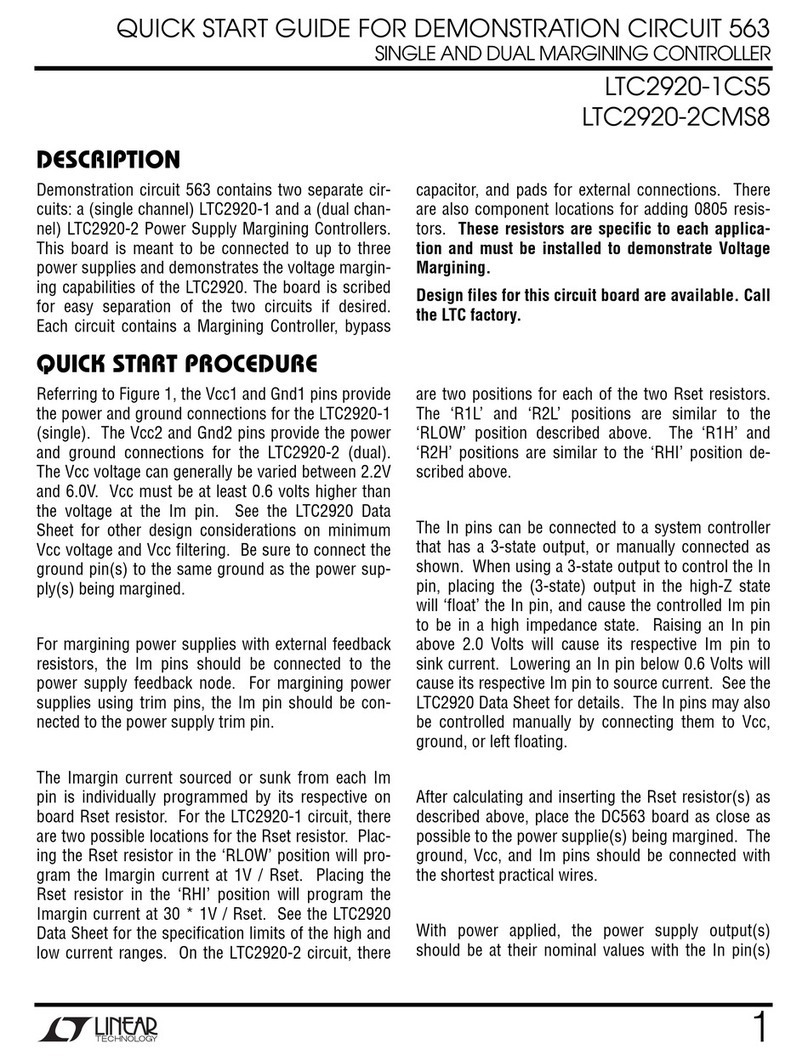
Linear Technology
Linear Technology LTC2920-1CS5 quick start guide
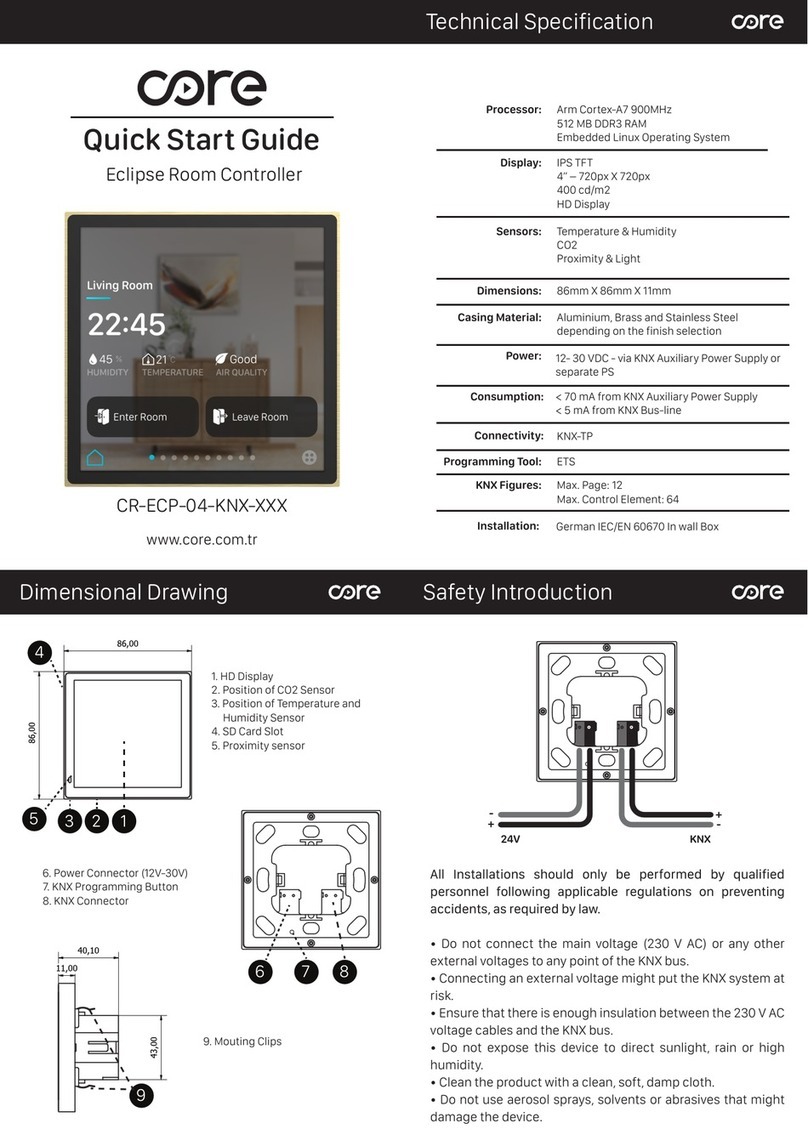
Core
Core Eclipse CR-ECP-04-KNX Series quick start guide

Hubbel
Hubbel Metron MP15 Set up and operating instructions
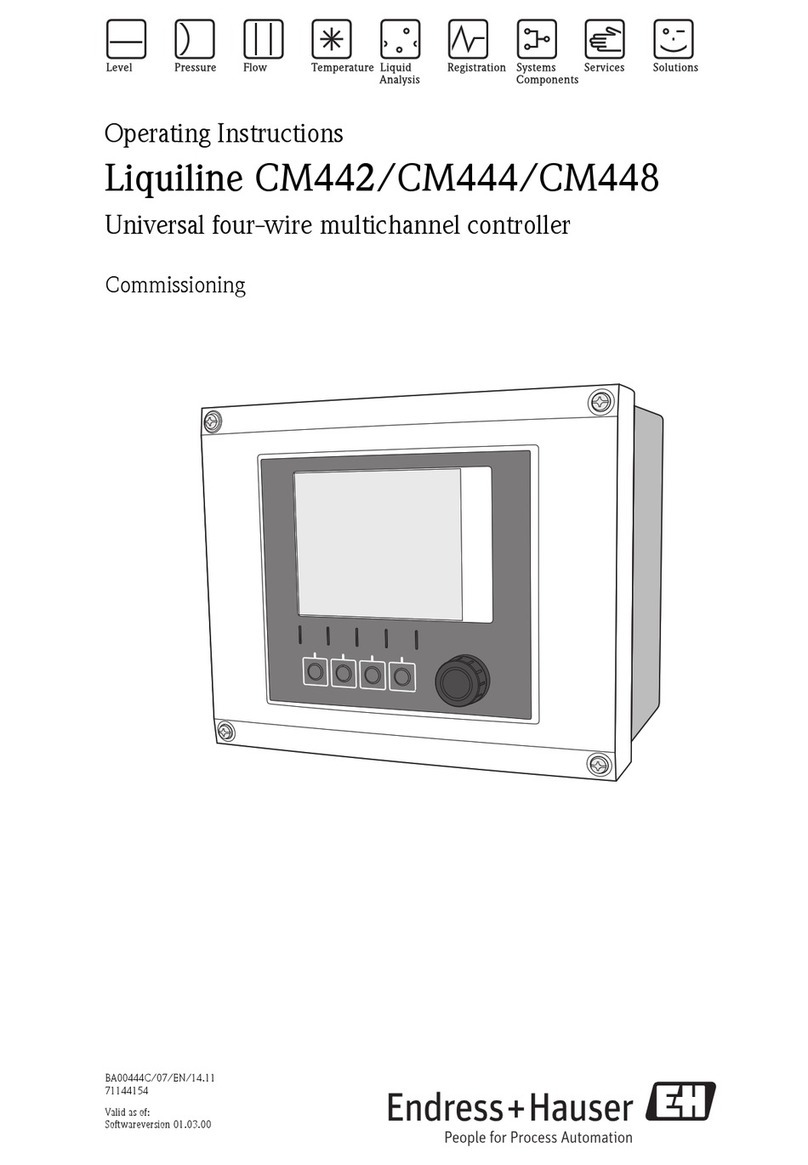
Endress+Hauser
Endress+Hauser Liquiline CM442 operating instructions

ASCO Numatic
ASCO Numatic Sentronic LP 617 Series installation manual
